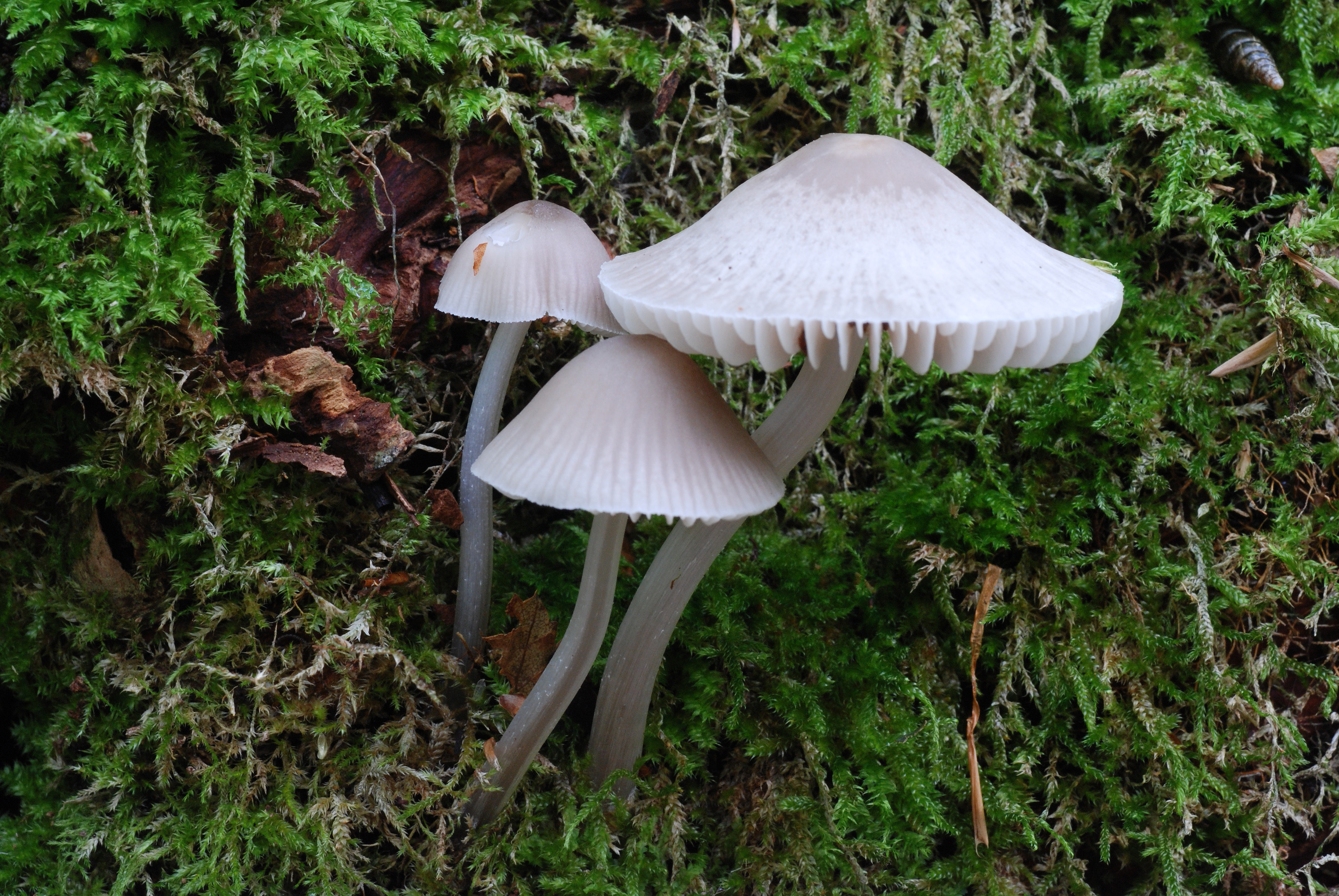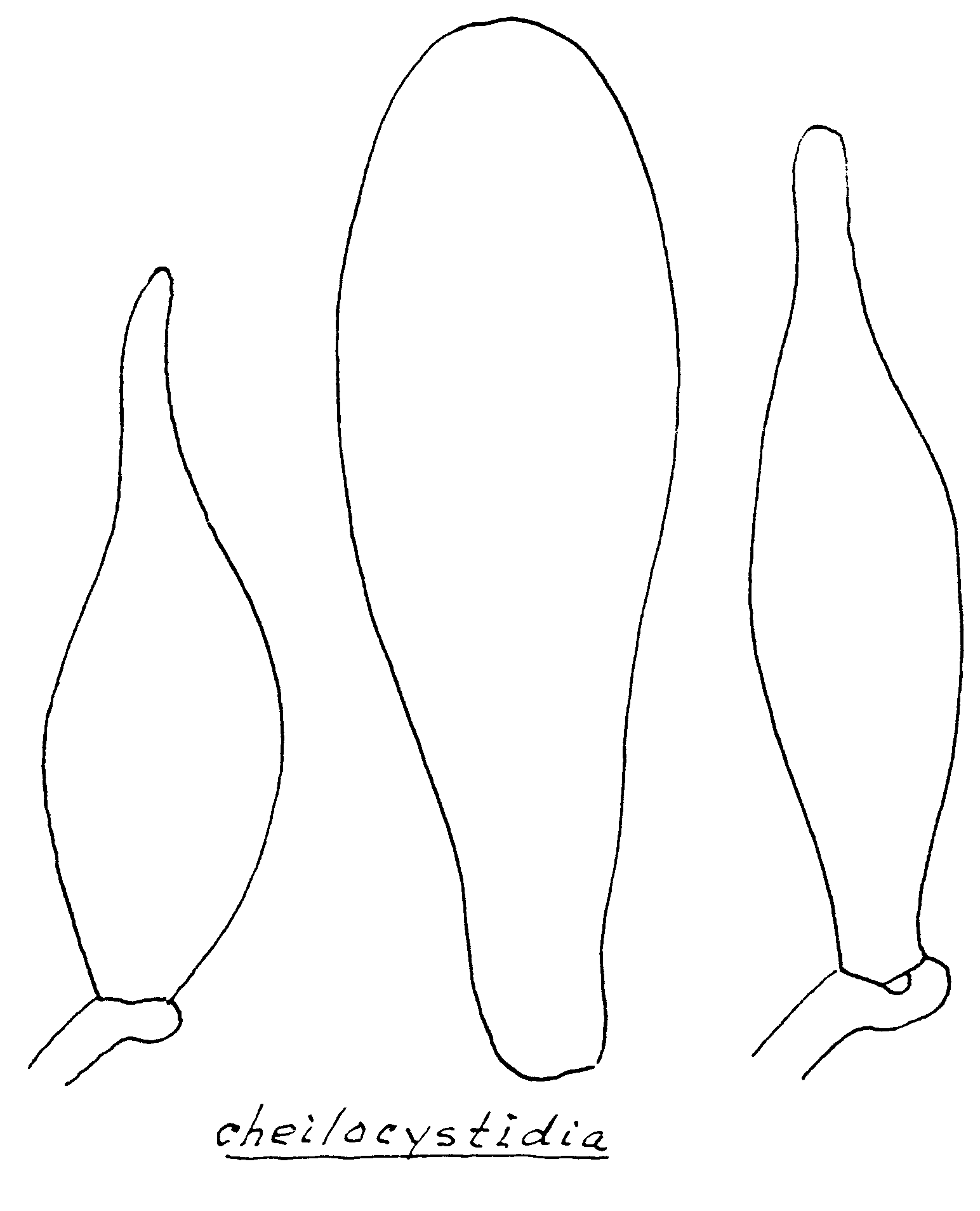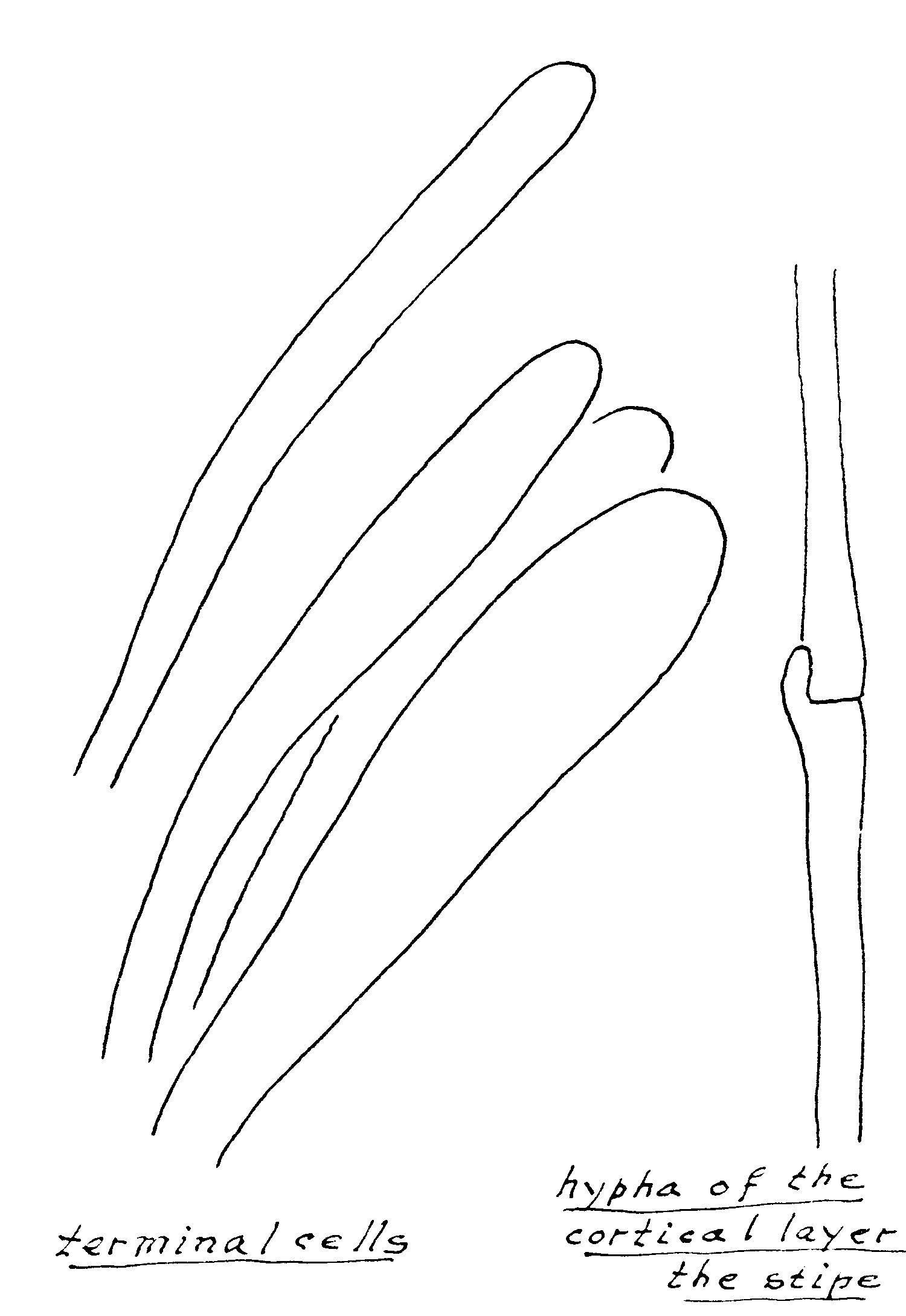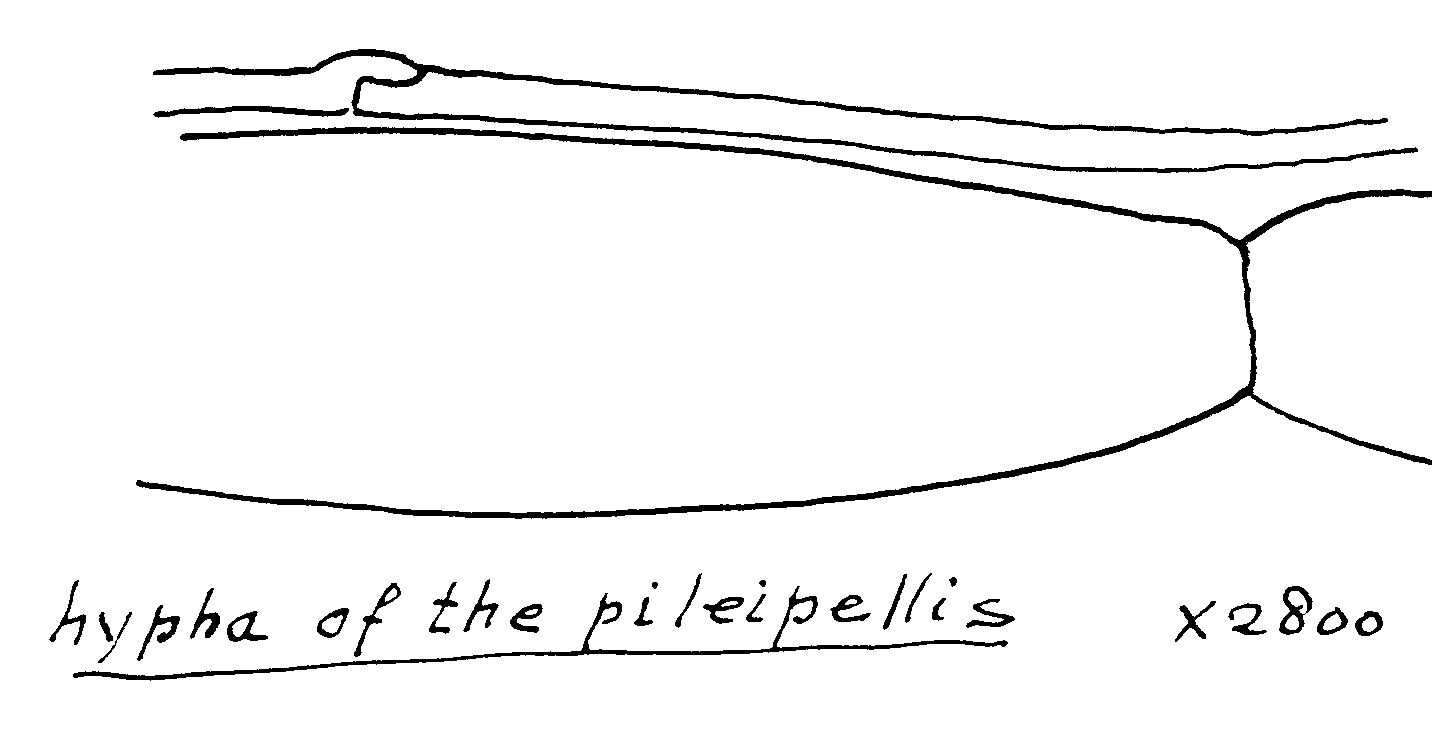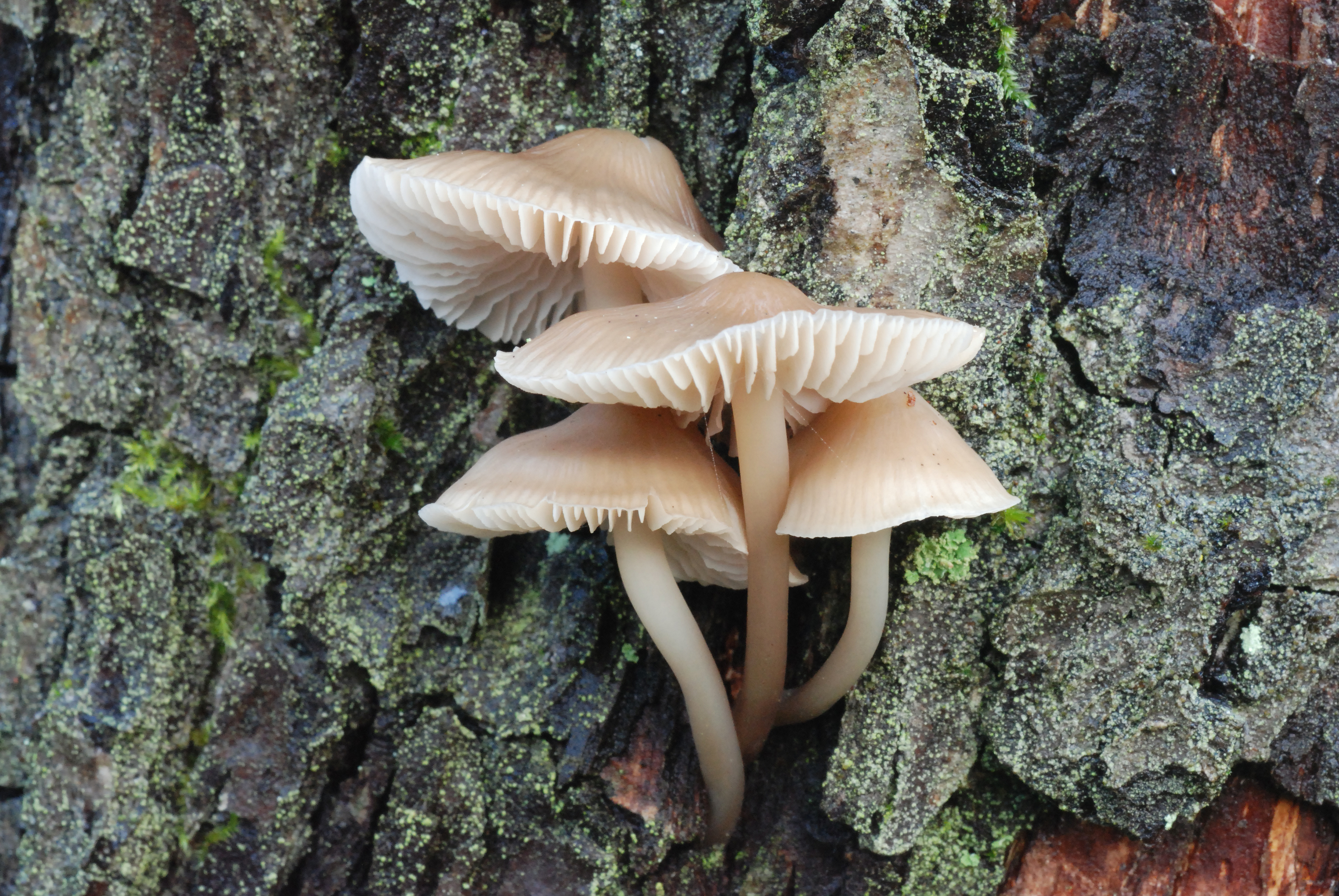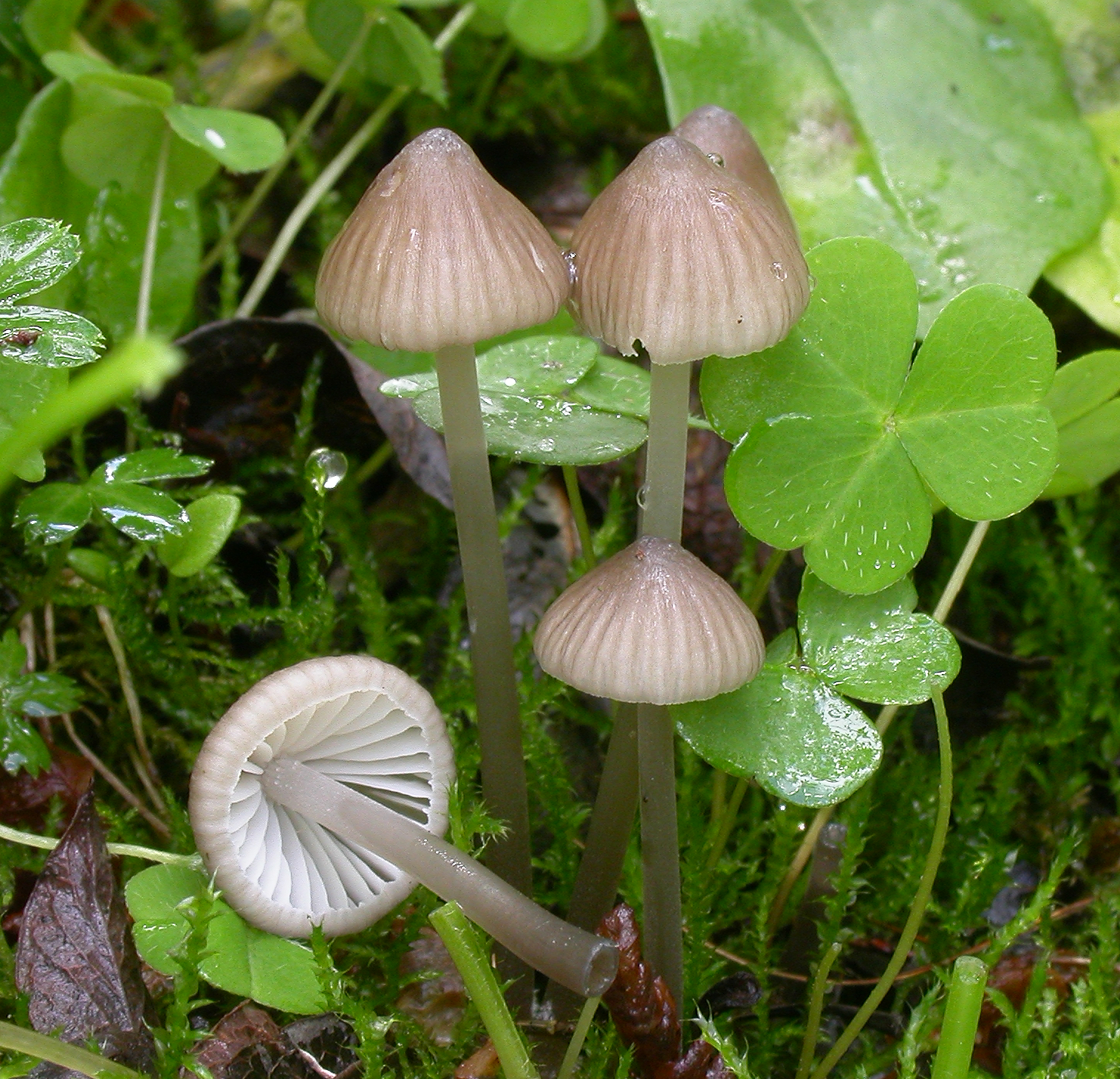Mycena niveipes
Mycena niveipes
Description
Cheilocystidia
Stipitipellis and caulocystidia
Pileipellis
Cap 15-60 mm across, parabolical to convex, with or without a low umbo, flattening with age, translucent-striate, sulcate, hygrophanous, at first very dark brown or black-brown, soon fading to grey-brown to grey, sometimes nearly whitish, the margin paler to almost white. Gills 25-30 reaching the stem, adnexed, smooth to veined, pale grey to white, sometimes tinged pinkish or incarnate. Stem 25-80 x 3-8 mm, cylindrical, equal, fragile, finely innate-fibrillose and with a satiny sheen, pruinose above and glabrous farther below, pale bluish white or greyish white when very young, gradually turning white, the base usually darker, more or less densely covered with white fibrils. Odour nitrous, but often weak or even absent. Basidia 30-36 x 7-9 µm, slenderly clavate, 2- or 4-spored. Spores (4-spored) 8-11.2 x 5.2-7 µm, Q = 1.2 - 1.7, Qav ˜ 1.5 or (2-spored) 11.6-14.8 x 6.7-8.1 µm , pip-shaped, amyloid. Cheilocystidia 40-110 x 9-22 x 0-4.5 µm, fusiform, lageniform, conical, subcylindrical, clavate, smooth, apically broadly rounded or gradually to more abruptly tapered into a shorter or longer neck. Pleurocystidia similar. Lamellar trama dextrinoid. Hyphae of the pileipellis 2-4.5 µm wide, smooth, not embedded in gelatinous matter. Hyphae of the cortical layer of the stem 3-4.5 µm wide, smooth, not gelatinized, with terminal cells 6-9 µm wide, smooth to somewhat branched. Clamps absent or present in all tissues.
Ecology and distribution
Solitary or subfasciculate on decaying wood and stumps of various deciduous trees. Early summer to autumn. Widely distibutet but not very common.
